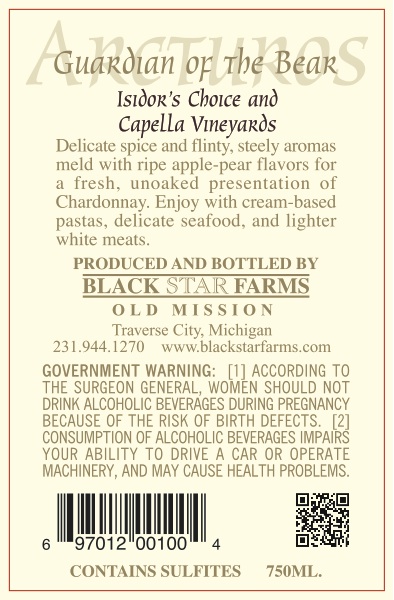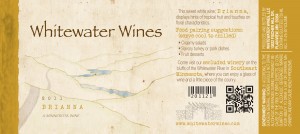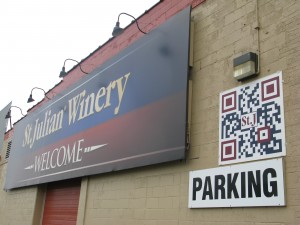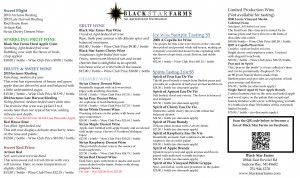Midwest Wineries Start Using QR Codes
With over 50% of Americans now having smartphones, Midwest wineries are finding QR codes help them engage with their customers both in retail stores and at their wineries.
The Midwest wine industry is seeing more and more QR codes popping up on everything from wine labels to tasting room menus. Quick Response Codes can hold nearly as much information as traditional UPC codes and are known for their very fast readability by smartphones.
QR codes allow wineries to have one-on-one smart phone conversations with customers which support and foster real tasting room conversations. Coryn Briggs, Director of Marketing at Black Star Farms in Michigan, says they use the QR codes to act like a shelf talker, providing detailed information about each wine. According to Briggs, “The codes on the labels go to the wine’s webpage that has technical information about the wine as well as food pairing suggestions and winemaker comments. Sometimes the code will link to a brief video with our winemaker about that wine.”
Other wineries use the QR codes to direct customers to a specific website page. Jill Joyce, Director of Brand & Product Development at Illinois Sparkling Co., uses QR codes on their wine labels to direct people to their website page, ‘What is Traditional Method?” which explains the methode champenoise used to make their sparkling wines.
Wanda Hanlon, from Whitewater Wines in Minnesota, said the winery started using QR codes during a label redesign last year as that was part of “a cool, cutting edge, marketing strategy.” Their QR code provide a direct link to the Whitewater Wines website home page.
According to, Angela Braganini, head of Marketing and Public Relations at St. Julian Wine Co. in Paw Paw, Michigan, ‘QR codes are a great, cost-free way to generate traffic of interested customers to our website.” Since February 2011, St. Julian Wine Company has used QR codes on everything from signage to shelf talkers to table tents. They even use a large QR code on the front of their building that links to a special website landing page with a buy one, get one free tasting.
Coryn Briggs from Black Star Farms said the addition of QR code on tasting room menus has produced measurable results. “Using the QR code on our tasting menus has helped us steadily grow our fan base on the Black Star Farms Facebook page. Since we added the code to the menus we have generated more than 1800 new “fans” from this channel alone. The code continues to perform well in directing new customers to “like” our Facebook page.”
Black Star Farms has also used QR codes in a hotel directory guide ad, which links to a text message with a special discount offer.
Another important aspect of using a QR code is the ability track how often consumers scan the code. Just like wineries can track who opens email newsletters and clicks on website links, wineries can also track how much traffic QR codes are generating and which codes are most successful. Sites like www.qrcodetracking.com, Google’s www.goo.gl, and Scan.me make it easy to see which QR codes are the most popular.
Plus, there are now companies, like Likify, that take QR codes to another level by getting winery customers engaged on Facebook and Twitter. Here’s how it works: When a smart phone user scans the Likify QR code on a wine bottle, they are taken to a branded mobile page with a photo of your product. Users can then select between sharing on Facebook or Twitter how much they love the wine. For example, the Facebook message might say ‘Joe Smith likes the 2009 Norton from Thousand Oaks Winery.”
QR codes are more than a trendy marketing tool. Used as part of an overall marketing strategy, consumers with smart phones have another way to get to know your winery’s story and how you are unique. For example, do you have a video of your winemaker talking about their process? A QR code can be a quick and easy portal to a video or other information that has already been produced.
As QR codes grow in popularity, so will the many different uses of the codes. The most important part being that it engages the customer in someway, just like the personal contact in a winery’s tasting room.
Rebecca is the owner of Bauerhaus Design, which specializes in building brands for Midwestern wineries. For more information visit Bauerhaus Design at www.bauerhaus.com
[wp_geo_map]








These are great examples of Wineries connecting with their customers using QR codes on bottle labels. We’re seeing consumers scanning more frequently as well wineries like this using QR codes in a more engaging way like the ones you’ve mentioned. Great stuff!
Thanks Neil! What other trends have you seen in mobile marketing?